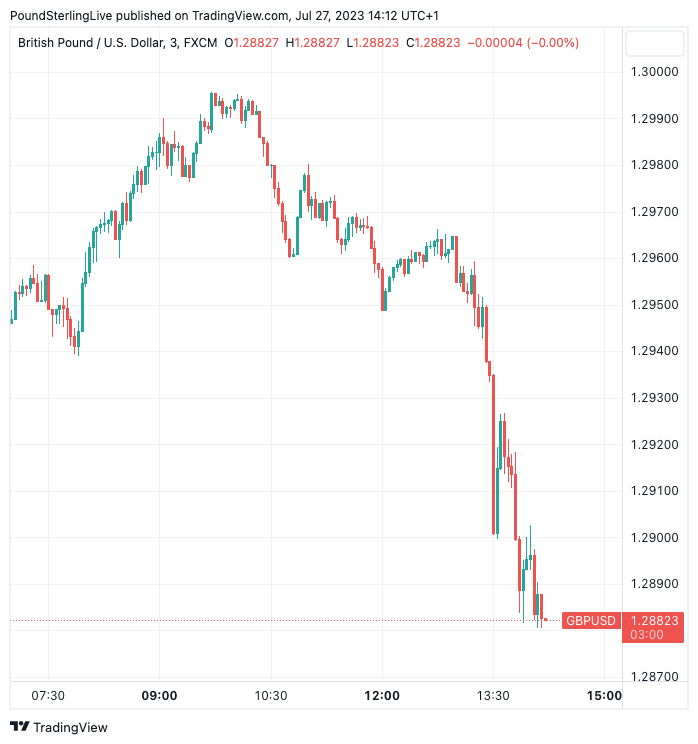Dollar Rebounds Following Strong U.S. GDP Report
- Written by: Gary Howes
-

Image © Adobe Images
The U.S. economy is not slowing by as much as investors and economists were expecting, raising bets the Federal Reserve can raise interest rates on yet another occasion before the year is out.
The Dollar recovered against the Euro and Pound Sterling following news GDP advanced by 2.4% annualised in the second quarter, which was above the consensus expectation of 1.8%.
The data comes just hours after the Federal Reserve raised interest rates by a further 25 basis points and said it would do so again should the data warrant.
"Just as the Federal Reserve thought it could take an extended pause with its rate hikes, the latest US GDP figure for the second quarter comes along and muddies the waters," says David Henry, investment manager at Quilter Cheviot.
The Pound to Dollar exchange rate fell in the wake of the numbers to 1.2913, having been as high as 1.2995 earlier in the day.
"The September FOMC is still relatively far away, but if the positive trend in data continues, the likelihood of another rate hike will increase. This data is expected to have a hawkish impact on US rates and a bullish effect on the USD during today's session," says Ryan Brandham, Head of Global Capital Markets for North America at Validus Risk Management.
"The US economy has been remarkably robust in the face of the highest interest rates for decades and it shows no sign of slowing down. The Federal Reserve has always been clear that if the economy can handle more rate rises then it will continue on that path. This latest data point may just suggest that one more rate rise is not off the cards," says Henry.
Nevertheless, the Dollar's upside potential was crimped somewhat by accompanying inflation data that came in on the softer side of expectations: the core PCE number of 3.80% for the second quarter undershot expectations of 4.00%, and marked a sharp slowdown on the previous quarter's 4.90%.
Katherine Judge, Economist at CIBC Capital Markets, says the U.S. economy didn't show the cooling in activity that the Fed has been hoping to see.
Nevertheless, "we continue to look for a deterioration in activity ahead as the impact of past rate hikes materializes, and consumption slows further, in line with the drawdown in excess savings and the recovery in credit card balances," she says.











